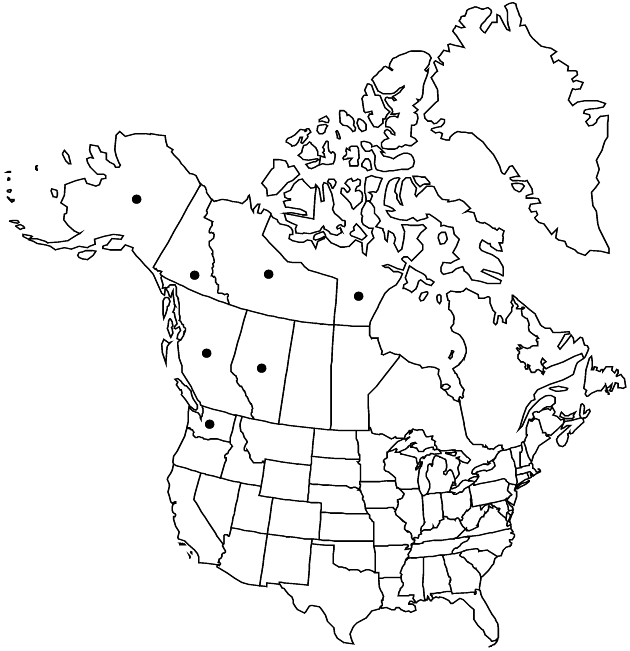Artemisia furcata
Fl. Taur.-Caucas. 3: 567. 1819.
Perennials, 7–35 cm (not cespitose), faintly aromatic (not rhizomatous, taproots stout, caudices simple or branched, branches clothed with persistent leaf bases). Stems (flowering) 1–5, erect, light brown, simple, strigillose or glabrate. Leaves basal (in rosettes) and cauline, gray-green; blades oval, 2–10(–12) cm (basal) or 1–1.5 × 0.4–0.6 cm (cauline), 1–3-palmately lobed, faces sparsely to densely strigillose. Heads (erect or spreading, some nodding, peduncles 0 or to 30 mm) in racemiform or spiciform arrays 1–6 × 1–2 cm. Involucres broadly campanulate, 3–6 × 4.5–8 mm. Phyllaries (greenish, color often obscured by indument) ovate or lanceolate (margins dark brown), sparsely to densely tomentose. Florets: pistillate 6–7; bisexual 15–26; corollas mostly yellow, sometimes red-tinged, 1–2 mm, glabrous or glabrate. Cypselae oblong (ribbed), 1–1.5 mm, glabrous. 2n = 18, 36, 72, 90.
Phenology: Flowering late summer.
Habitat: Talus slopes or tundra
Elevation: 500–2700 m
Distribution

Alta., B.C., N.W.T., Nunavut, Yukon, Alaska, Wash., Asia.
Discussion
Artemisia furcata extends from the islands of the Bering Sea into southern and interior Alaska, parts of Canada (disjunct in British Columbia and the northernmost Rocky Mountains of Alberta), and on Mt. Rainier in Washington. The array of names applied to A. furcata shows the taxonomic confusion arising from a myriad of morphologic variants that may indicate introgression with other species.
Selected References
None.